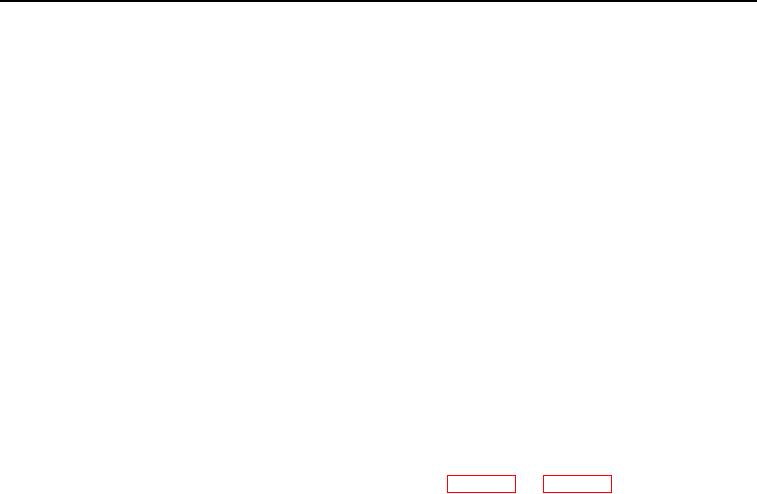
TM 5-3805-255-14
0019
INSPECTION INSTRUCTIONS
00019
1. General. All components and parts must be carefully checked to determine if they are serviceable for reuse, if
they can be repaired, or if they must be scrapped.
2. Hydraulic Cylinders.
a. Inspect all surfaces for burrs, scratches, nicks, scores and other abrasions. Stone or lap all burrs. If scoring
is deep enough to produce excessive leakage, replace valve assembly. Stone or use abrasive cloth on
small scores.
b. All parts with sliding fit must move freely in their bores.
c.
All grooves and passages must be free of foreign matter.
d. Replace springs if they are broken or distorted.
e. Replace all O-rings, seal rings, and gaskets.
f.
Listed below are instructions that must be followed to insure correct installation and effective sealing of
O-rings.
(1) Seal counterbores must be thoroughly cleaned.
(2) O-rings, plungers, and counterbores must be lubricated on assembly.
(3) O-rings must be free of molding defects and handling damage.
(4) O-RINGS MUST NOT BE STRETCHED beyond the yield point.
(5) EXTREME care must be taken to avoid ROLLING the O-ring into the counterbore. (A twisted O-ring is
not likely to straighten itself after installation, and is almost certain to leak.)
(6) Care in handling of parts and hydraulic system cleanliness cannot be over-stressed.
3. Drilled and Tapped (Threaded) Holes.
a. Inspect for wear, distortion (stretching), cracks, or any other damage in or around holes.
b. Inspect threaded areas for wear, distortion, or evidence of cross-threading.
c.
Mark all damaged areas for repair or replacement.
4. Metal Lines, Flexible Lines (Hoses), and Fittings.
a. Inspect lines for sharp kinks, cracks, bends, or dents.
b. Inspect threaded areas for wear, distortion, or evidence of cross-threading.
c.
Check all fittings and connectors for thread damage. Check for hex heads that are worn or rounded by
poorly fitting wrenches.
d. Mark all damaged material for repair or replacement.
5. Castings.
a. Inspect all ferrous and nonferrous castings for cracks using a magnifying glass and strong light.
Particularly check areas around studs, pipe plugs, threaded inserts, and sharp corners. Replace all
cracked castings.
b. Inspect machined surfaces for nicks, burrs, or raised metal. Mark damaged areas for repair or replace-
ment.
c.
Inspect all pipe plugs, pipe plug openings, screws, and screw openings for damaged or stripped threads.
d. Check all gasket mating surfaces, flanges on housings, and supports for warpage with a straightedge or
surface plate. Inspect mating flanges for discoloration that may indicate persistent oil leakage.
6. Studs, Bolts, and Screws. Replace if threads are damaged, bent, loose, or stretched.
0019-5

